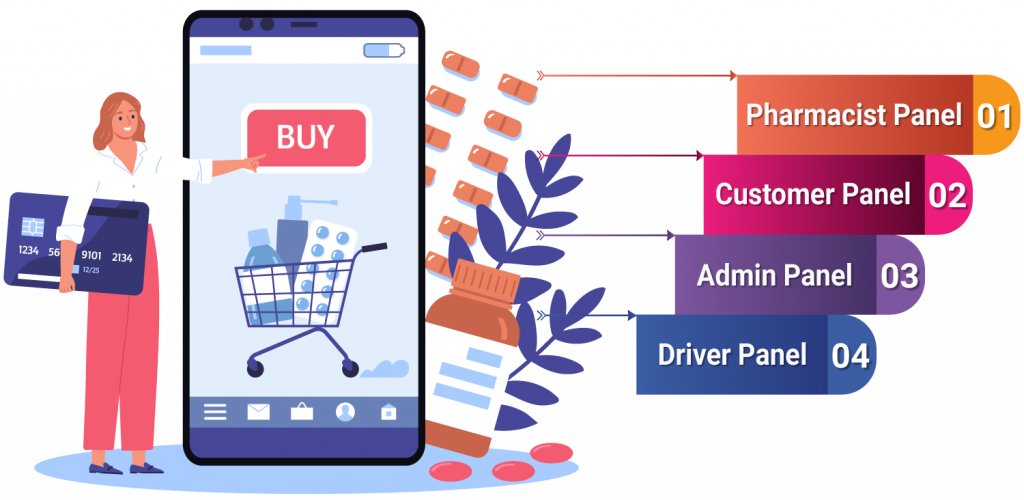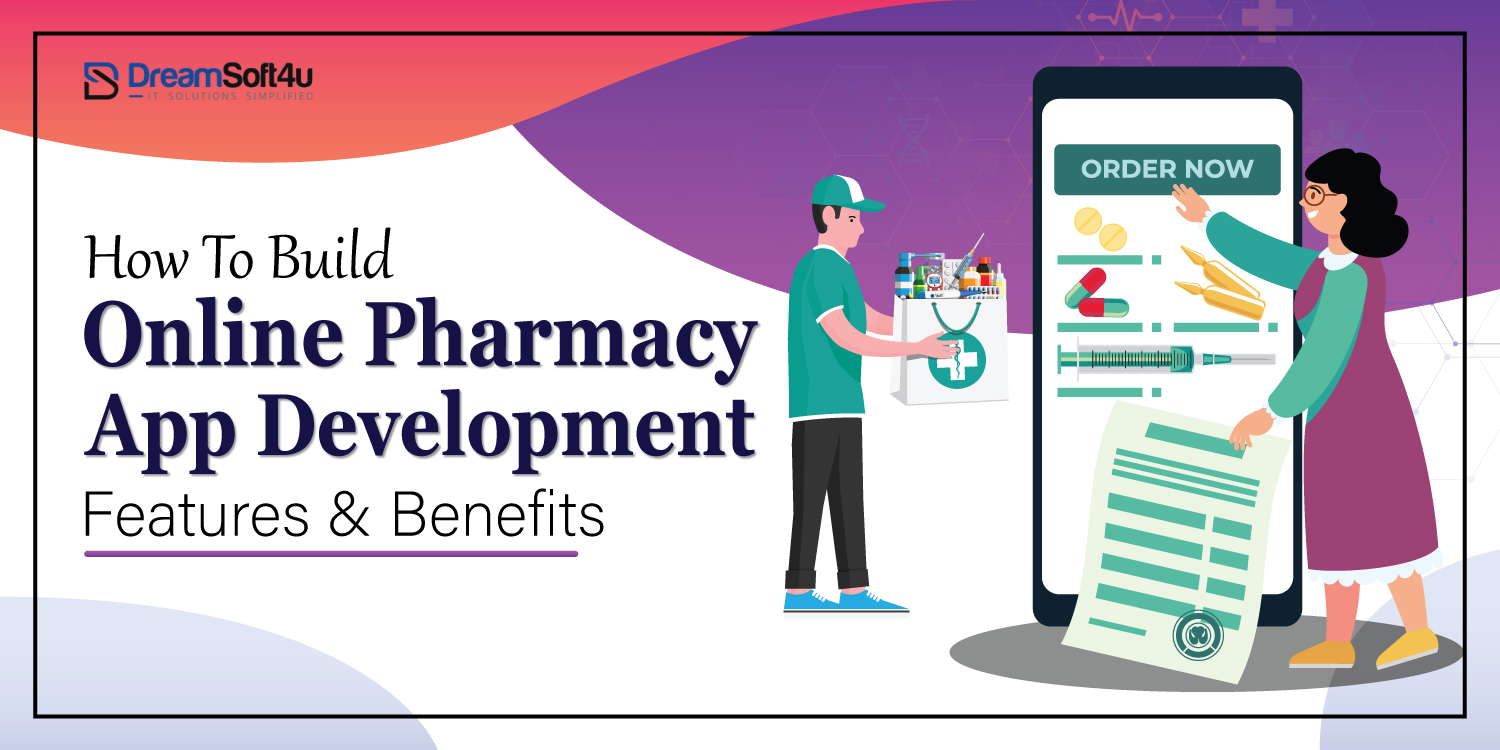Online pharmacies are on the rise! eCommerce websites and platforms are becoming a lot more popular with consumers. This recent explosion in demand for online pharmacies makes it easier to run your own business. You need to immerse yourself in this industry & study all of the aspects of building an online pharmacy app that allows you to deliver affordable medicine while also remaining profitable.
The coronavirus pandemic has caused a lot of suffering around the world. It’s heavy toll on humans the environment and on healthcare services is sobering. improving these systems is no doubt difficult but there have been promising signs that this might be possible.
It’s never been a better time to build an e-pharmacy app. With the recent surge in popularity, people are desperate for more ways to access healthy options. Plus, there is a lot of room for growth in the field so it’s not too late to go into this business – as long as you have good research and marketing strategy tools.
Medicines are important in every house especially these days when we are faced with the limitations imposed by the challenges of COVID-19. In fact, it lets us face the difficulties of buying medicines. Health and healthcare are one of the sectors with the highest growth. With the rise of pharmacies across the street, they have been a threat to deal with. In this article we’ll discuss a Complete Guide to Online Pharmacy App Development.
Table of Contents
ToggleWhat is an Online Pharmacy App?
An online pharmacy is a type of computer application that allows customers to search and order necessary medications, and have them delivered.
Consumers are increasingly using online marketplaces, to interact with brands. As for the benefits of this business model, it offers customers more choice and allows them to compare prices.
Mobile applications are a great way for companies to provide a quick and easy means for consumers to contact them. They cost less and take less time than creating an online presence from scratch. Unfortunately, if you are just starting out as a new business, it might be too expensive or complicated to consider.
Online pharmacy apps are often created by pharmacies to better connect with customers and provide a solution that may be convenient for them. This might help reduce on the number of visits to a brick & mortar pharmacy.
Reasons Why Your Pharmacy Needs an App?
Health providers need to be able to deliver on their patients’ demands in order to keep their business afloat and keep their customers coming back. Here are some reasons why your pharmacy needs an app.
1. Convenience
From wherever they are comfortable, give patients the option to refill prescriptions. You automatically reduce the hassle and increase the likelihood when they are supposed to refill their medications.
2. Save Time
Time-saving goes hand-in-hand with convenience. If patients can refill from the palm of their hand rather than going through the process of calling or visiting the pharmacy in person, they save time and effort every time they need to refill a prescription.
3. Fewer Phone Calls
The first line of defence against phone calls is your website and the app. To prove this, ask yourself the question: How much time are you spending on the phone? How many of those calls will be required to refill prescriptions? Let them do the work for your app. Your patient refills through the app of your pharmacy for every prescription that is one less phone call you need to take. Less phone time means more face-to-face time with patients in-store
4. Better Customer Service
Waiting in the line because somebody is on the call will make frustrate. Community pharmacies are known for their personal, first-name approach to patient assistance. You can connect with the population of patients if you having an app and who want to take medicines digitally. Who prefer to come to pharmacy physically It also frees up some of your own time to consult with those patients.
Important Factors To Consider During Online Pharmacy App Development
While developing an online pharmacy app one should consider the following factors:
- UI/UX – While building an app, keep in mind this that the app should design user-friendly.
- Compatibility with different platforms – Your pharmacy application should be compatible with the various devices, platforms, and software that customers may prefer to use.
- Security and compliance –Sensitive information will be included in the pharmacy app. It should therefore abide by the rules and regulations within the regions to which it is catering.
- Scalability –You can plan the expansion of your business by increasing the user numbers. It implies a demand for scalable solutions that the experienced custom software development company can deliver as an integral part of your project.
How to build Online Pharmacy Application?
Building an online pharmacy application can be difficult and time-consuming, but there are some ways to make the process easier. To start, you should select a medical specialty that is relevant to your business.
Next, you need to create a website with a front-end that will allow users to find products they are looking for. Then, you need to get content on the site and make sure it is organized . Finally, you will need to create a successful digital marketing strategy. Here are some steps to create a successful medicine delivery app:
Step 1: Discovery Phase
It’s important to research the competitors at this point, and know just what they’re missing so you can get ahead. Besides that, the target consumer expectations are listed for a more successful marketing strategy.
Step 2: Requirements gathering
First, you’ll want to decide what type of app you want to create. This will mainly entail conversations with other members of the team, as well as experts from the software and design department. Its purpose is to provide the pharmacy application with a comprehensive definition of the functional and non-functional specifications.
Step 3: Feature List
Take the premise of your software and envision what will be a better iteration of your software. Making sure the product backlog is full of features that complement your application and serve the needs of your users
Step 4: Prototyping
In reality, it is the process of taking the concept and translating it into an application with some simple functions. By a prototype, it is possible to market the project to prospective customers who can actually see the real results rather than simply imagine or read product summary. The aim of providing an interactive interface prototype is to illustrate how product features are described at the end of the customer.
Step 5: UI/UX Design
The design of your pharmacy app should have a user-friendly and functional interface responsive to the latest UI/UX trends. Design is not only about how will your app look, but it’s about how a user will experience the app. Design is a way of making technology useful. So look for a UI/UX web app developer who puts design first.
Step 6: iOS & Android development
Mobile developers are engaged to be working on the project at this stage. To design software that is compliant with Android & iOS devices, you’ll need to choose best mobile app development platfrom to produce an application that runs on the iOS and Android platforms.
Step 7: Backend development
We’ve entered a very fragile stage in the growth of medical smartphone applications. It means building the application’s server-side, and you’ll require professional assistance from highly qualified backend developers.
Step 8: QA testing
The next stage’s goal is to guarantee the pharmacy app’s error-free service. Only a trained QA team can conduct all testing processes required. for the app.
Testing activities on the target platform:-
- API testing to verify that specific error message strings are supported in each language.
- Validating that email address verification works with any personal details provided.
- Testing in different situations, like using a VPN to test a service not available in a geographical region (e.g., China).
Step 9: Upload to store
Creating a pharmacy app for patients isn’t enough. You need to properly launch your pharmacy and then help its successful existence.
What are the 3 Different Types of Pharmacy Apps
Building your app will need to match the existing online pharmacy business model and align with the strategies you are implementing in your pharmacy. You may choose between these three types of pharmacy apps:
1. Apps for Pharmacy Marketplaces
Having a marketplace business model for ordering and delivering medicine services enables nearby pharmacies to list their store in the app to avoid monopoly while at the same time benefiting all the business involved. This makes it easier for consumers to order medicinal products from local suppliers.
2. Apps for Online Pharmacy Store
An online pharmacy store is best suited for independent pharmacies and medical businesses where the company is able to connect and interact directly with its clients. The products are sold directly through the app and are delivered directly by the stores.
3. Apps for Pharmacy Store Chains
Having a pharmacy network application in one brand can help boost sales and loyalty of the customer.
Must Have Features of Pharmacy App, You should have
When you’re developing your mobile app, it’s important to know which features to include. Your customers will come back in droves and you’ll be able to increase your revenue with the right features. When you get in touch with an online pharmacy app development company, keep these four points in mind.

1. Customer Panel
- Prescription Upload: In this feature, prescription of any customers should be easily uploaded so that pharmacists can see from their devices.
- Easy Register/login: Login and registrations system via email, social media accounts, or telephone numbers should be easy of app.
- Search Option: In search option try to include some advanced search filters.
- Medicine Information: Producer prices, details, and descriptions of available medicines should be easily seen.
- Find Substitutes: Give them information about their medication substitutes and cheaper options.
- Refill Prescription: Customers can get their prescriptions faster with an order history feature.
- Medicine Reminders: In this feature, Medicine intake alerts and notifications are a must-have element of the set of features.
- Payments and Offers: In any app there should be various payment options.
- Manage Profile: In this feature users can easily manage their profiles, mode of payment, addresses of delivery, and details of payment.
2. Admin Panel
- Inventory: It includes managing admins the event that they need to identify product expiry dates, see stock prices, and control item pricing.
- Orders: Admins should be able to monitor and track the status of all issued orders as the order process progresses.
- Manage customers: Admins should also provide a reliable customer records database for customer information
- Payments and Offers: This section includes payments and offers-deals and various user discount options as well as how payments are treated.
- Content Management: Includes FAQs, conditions, and terms.
- Marketing Tool: Admins may use this method to control ads, marketing communications, and marketing campaigns.
3. Pharmacist Panel
- Dedicated interface: Your distributor pharmacist will use the online console to handle orders and inventories easier
- Order Notification: Pharmacists are told of new orders via e-mail or online alert on time.
- Digitize Prescription: Pharmacists view digital prescriptions and easily access.
- Support: Customer support should be readily accessible for customer needs which are essential to customer satisfaction and retention.
4. Driver Panel
- Login: Drivers will easily log in using their preferred login credentials such as password, phone number, or social media accounts.
- Driver Profile: This helps Couriers to store the history of delivery.
- Delivery Information / Status: This functionality helps the driver to make required updates to delivery status development.
- Map Tracking: Couriers should use maps to manage optimal route and path of distribution
- Push Notifications: Couriers should also be able to receive notifications and alerts when placing orders.
Want to Build Online Pharmacy App for Business?
Connect with the Professionals of DreamSoft4u
Final Thoughts
While the pandemic still persists, businesses are increasingly shifting towards the digital realm. Just like most traditional businesses have moved online, pharmaceutical and healthcare industries are also moving online.
Online pharmacies have been around for a long time but are now growing in popularity and presence. In some countries, these online pharmacies are even the only way people can buy prescription drugs.
More patients prefer to order their medications online or get them delivered to their front door instead of visiting local pharmacy stores. This method is designed to avoid the need for long lines, making it more accessible and user-friendly
If you’re a pharmacist, you stand to benefit a lot by using these apps. All you need to do is prepare your idea and get in touch with a mobile app development company – it’s that easy!
We have a client range from dental clinics, hospitals, rural clinics, blood processing agencies, individual physician, and full-service hospitals. We offer planning, system integrations migrations, and many more. Our Healthcare IT Solutions make your staff hassle-free so they can focus on patient and client requirements.
FAQs
Q1. What are the key steps involved in developing an online pharmacy app?
Key steps involved in developing an online pharmacy app include identifying user needs, designing an intuitive user interface, integrating with pharmacy management systems, ensuring secure payment processing, and implementing medication tracking and refill features.
Q2. How do I ensure compliance with HIPAA and FDA guidelines?
To ensure HIPAA and FDA compliance, it’s important to work with experienced developers. They understand the regulations and can implement appropriate security measures, data encryption, and other safeguards.
Q3. How can I ensure scalability and flexibility for my online pharmacy app?
Ensuring scalability and flexibility for an online pharmacy app involves choosing a technology stack that can handle growth, implementing cloud hosting and load-balancing solutions, and designing modular and extensible code.
Q4. How do I work with third-party vendors and APIs?
Working with third-party vendors and APIs involves carefully selecting partners based on their reputation and reliability, negotiating clear contracts and SLAs, and implementing secure and efficient integration methods.
Q5. What is the typical timeline and budget for developing an online pharmacy app?
The timeline and budget depend on factors such as the scope and complexity of the project, the technology stack, and the availability of resources. Typically, the development process can take several months for medium to large-scale projects.
Q6. Post-development, How do I test and validate my online pharmacy app?
It’s important to conduct comprehensive testing across multiple devices and platforms. You should also gather user feedback and analytics to identify areas for improvement. There should also be a plan for regular updates and maintenance to ensure continued HIPAA and other compliances.























